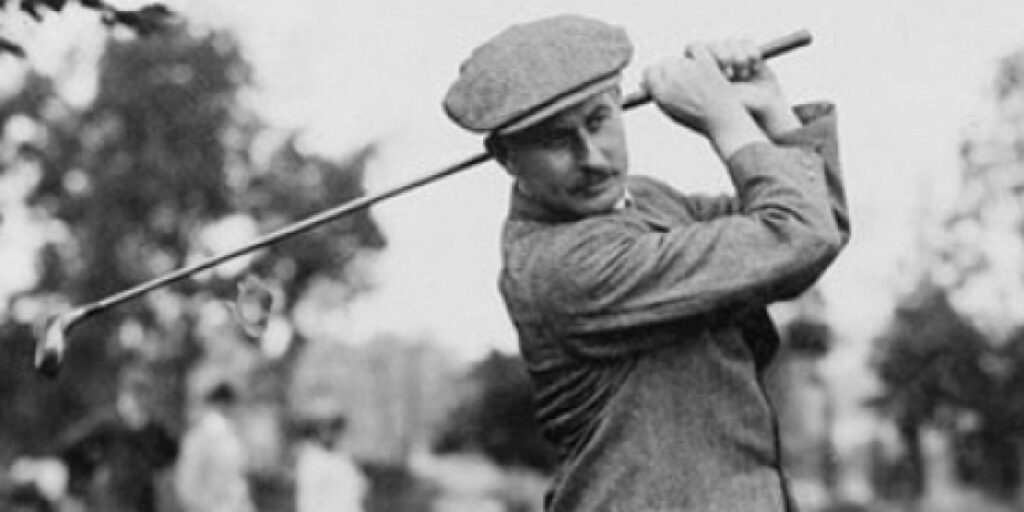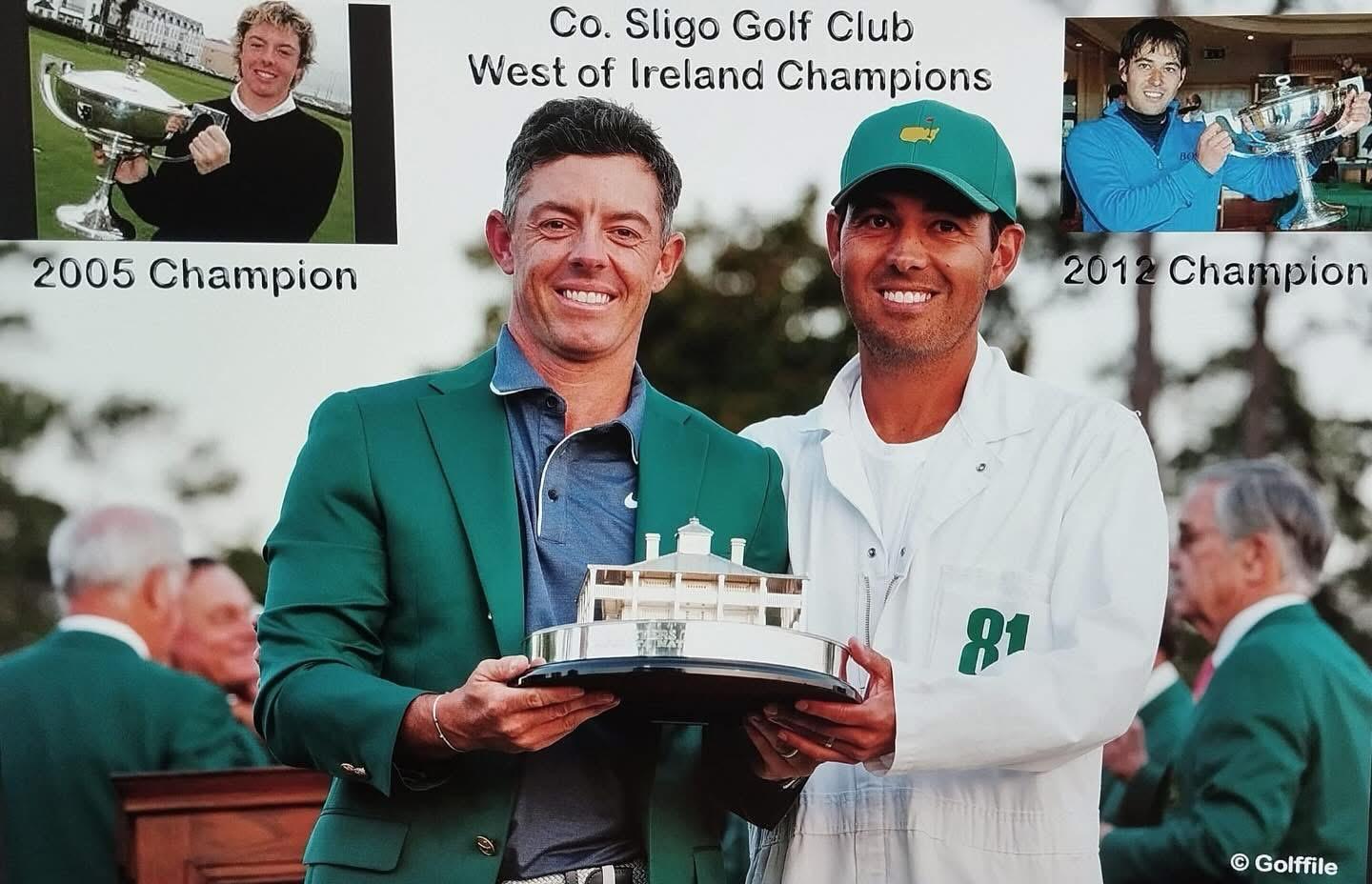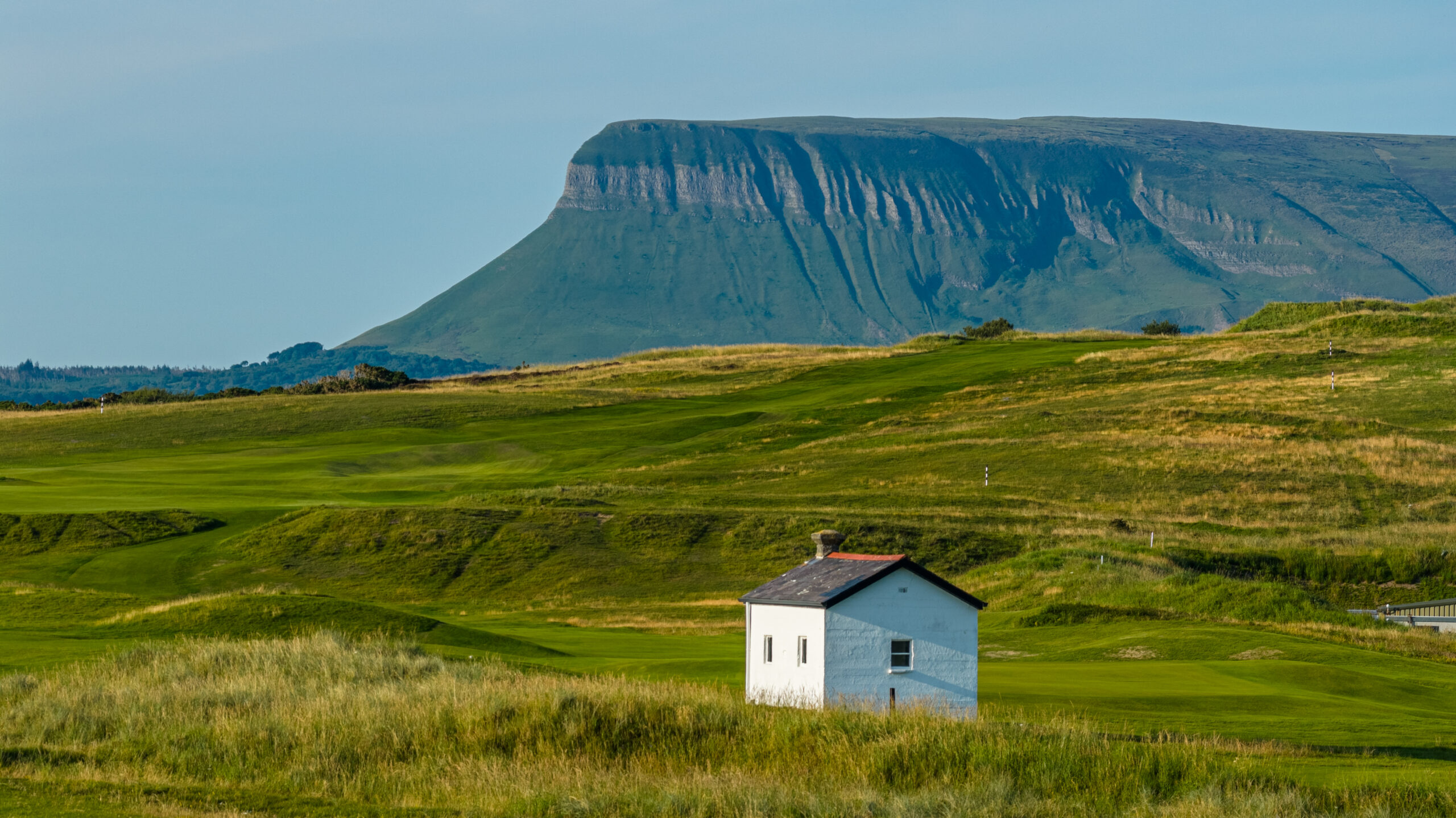There are moments in sport that become etched in history, not just because of the trophies won, but because of where the journey began. … Read More
A Brief History of County Sligo Golf Club.

County Sligo Golf Club, or Rosses Point as it is more popularly known, is situated five miles from Sligo town on a headland under the shadow of Ireland’s table mountain Benbulben on one side, and Knocknarea with Queen Maeve’s grave on top on the other side. It is one of Ireland’s great championship links.
It has been the home of the West of Ireland Amateur Open Championship since 1923. It has also been the venue for the Irish Close Championship and will host the Irish Open Amateur Championship in 2019. It has hosted all the major Irish championships and was the venue for the Home International’s in 1991 and 2011 when it received many complimentary remarks on its condition and presentation from the best Amateur golfers on these islands.
The course enjoys a magnificent location with breathtaking views of the mountains, sea and rolling countryside and is a setting for golf that one will never forget. The view from the third tee has a superb panoramic view of the area immortalised in the poetry of W.B.Yeats. One can see five counties from here on a clear day.
The game of golf came to Sligo in the days of the old Sligo Militia who had a camp in the area and made a few holes around the camp. In 1894 Colonel James Campbell one of the officers, and a Sligo businessman, conceived the idea of forming a club and acquired the lease of a certain portion of the area known as the Greenlands from the Middleton family for that purpose.
The first meeting for the formation of the club was held in Sligo Courthouse on the 18th October 1894 with Col. Campbell in the chair. He formed a committee mainly with Arthur Jackson another prominent Sligo businessman and his nephew Harper Campbell Perry as the first secretary to run the club. The club had 96 male members on its formation and Col. Campbell was elected as the first Captain in 1895. He served as Captain until 1903 with Arthur Jackson taking over. The minutes of that meeting tell us that: The name of the club shall be “The County Sligo Golf Club”. The Council and the Hon. Secretary and Treasurer shall remain in office until resignation or cease to reside in Co. Sligo or to be a member of the club or until a general meeting by three-fourths of the members present shall vote to remove them. The entrance fee was set at £1-1s and was to commence on November 1st of that year. A week later it was agreed to admit Ladies for a subscription fee of 10s-6p.
Col. Campbell then acquired the services of George Combe, a notable golfer and subsequently the first secretary of the Golfing Union of Ireland to lay out nine holes on the land. Combe also had the distinction of devising the world’s first handicapping system. He was also closely associated with Royal County Down Golf Club. The local hotel owned by Mr Tom Ewing, just across the road from the club was used as the first clubhouse. In 1896 George Combe presented the “Combe Cup” to the club to mark his association with the club and the opening of the nine holes. The Combe Cup is still played for in the August Open Week.
In 1907 it was decided to extend the course to eighteen holes, more land was leased and the holes were laid out by Captain Willie Campbell a stepbrother of Colonel Campbell. Willie Campbell was an accomplished golfer and sportsman he played for Ireland in one of the first internationals in 1906. The new holes which took a clockwise direction out along the beach were integrated with the original nine holes.
In 1912 a new clubhouse designed by George O’Connor and built by James Kiernan was completed. Although modified and extended over the years the front of the clubhouse has remained the same as it is now a listed building, a gentle reminder of times past.
The first “West of Ireland Open Amateur Championship” was held in August 1923 was won by a local man Larry Vernon who was home on holiday from South Africa, he beat B.M.Cook a Scotchman in the final. There were 42 entries with 16 players qualifying for match play after 36 holes stroke play.
In 1927 due to the changes in clubs and the carry of the ball and the general evolvement of golf it was decided to upgrade the course. Mr Harry Shapland Colt of Colt & Allison, the famous golf architect was engaged to draw up the plans. Colt was acknowledged as one of the foremost golf architects of his time and he arrived later in the year. The design drawings are displayed in the Members bar. Some of the finest courses in the world were designed by Colt.
The work was carried out in 1928 and 1929. The result is what we have today, a layout second to none. The course is set on sand dunes and on cliffs overlooking two large beaches, constantly changing winds and elevated tees add to the challenge, two streams that meander through the course and come into play on a number of holes in particular at the 7th & 14th holes. A very fair course that rewards a good shot but with subtle undulations and punishing rough there is no room for errant shots. There have been a number of modifications over the years and the course has been considerably lengthened with new greens built at the third and twelfth holes. New bunkers have been added and modifications to a number of greens. A course revitalisation is currently been carried out.
The club has been successful in Irish golfing, they were the first club in Connacht to bring the Irish Senior Cup across the Shannon, and indeed have won it a number of times since. They have also won the Barton Shield as well as other National pennants.
Among the notable golfers that the club has produced was Cecil Ewing, born in Rosses Point, a son of Tom Ewing the local hotel proprietor. He first played in the West of Ireland at 18 years of age and won the Championship on no less than ten occasions. He competed in all of the major Irish Championships and was successful in most of them. He represented Ireland many times and also Great Britain and Ireland in the Walker Cup on a number of occasions. He reached the final of the British Amateur Championship in 1938, losing to the American Charlie Yates.
Another notable local golfer was a lady Amy Ormsby who in May 1909 won the Irish Ladies Close Championship in Lahinch. On emigrating to South Africa with her husband Larry Vernon( winner of the first “West”) she won the Ladies South African Championship on no less than 4 occasions.
Many other notable golfers have graced the course Christy O’Connor Snr. and Christy O’Connor Jnr. Harry Bradshaw, Walter Hagen, Joe Kirkwood, Norman Von Nida, Henry Cotton, Tom Watson, Byron Nelson, Nick Faldo, Peter Allis, Padraig Harrington, Paul McGinley and most of the Irish professionals. Great amateurs like Joe Carr, John Burke, Gerald Micklem, Jimmy Bruen, Joe Brown and locals like the Mahon brothers with many other notable amateur players.
Rory McIlroy won the “West” at the age of fifteen in 2005 the youngest player ever to do so, he won again the following year before going on to greater things. Shane Lowry was also successful here in the “West”. After a long wait, a local Barry Anderson won the “West” in 2017. Padraig Harrington won the “West” in 1994.
County Sligo is a course that can take its place beside any of the great Irish courses. It was Bernard Langer the great German professional who said “ Rosses Point was the first links course that I ever saw as a young professional starting out on the Tour circuit. I went to play one round and stayed for two weeks”.
Peter Allis was also very impressed by his first visit and stated afterwards;” Rosses Point is a gentle sleeping giant and a course that one should go and look at and I think they will come away marvelling at its beauty. The great test of a golf course is that it can be a tremendous test for the highest quality player and great fun for the modest competitor and that is where you have got it made. I had never visited the course before but had heard a lot about other Irish courses, but Rosses Point stands at the very top of the list of Irish courses and is one that more people should discover “.


From Rosses Point to the Green Jacket: Rory McIlroy’s Journey from County Sligo to Golfing Glory
There are moments in sport that become etched in history, not just because of the trophies won, but because of where the journey began. … Read More

